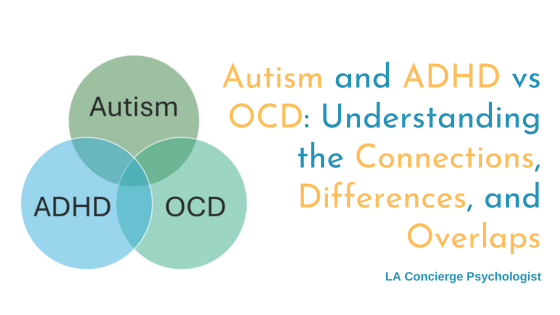How our brains function is not a fixed concept. The environments in which we exist can change our brains in many ways. This is good news— particularly for those living with attention-deficit/hyperactivity disorder (ADHD). ADHD is a condition marked by a pattern of inattention and/or hyperactivity-impulsivity. These factors consistently interfere with a person’s functioning or development. Thankfully, you can manage your ADHD symptoms by changing your environment.
Getting to the Center of Attention
Our brains, ADHD or not, can be easily tempted to lose focus on the important (but often mundane) stuff. When ADHD enters the picture, it can feel like temptation on steroids. Inattention and/or hyperactivity-impulsivity draw us away from what truly needs our attention. This does not, however, happen in a vacuum.
A major factor is our environment. We can and must put in the effort to create an environment that features cues, prompts, and reminders. These help us effectively and optimally function. Some people call these cues “guiding lights”. The distractions that draw our attention away from our responsibilities are called “flashing lights.”
Examples of “Flashing Lights”
- Demands and requests from friends, family, partners, or even pets
- Television
- Phone calls
- Background noise
- The internet
- Visitors
- Random events (e.g., someone shouting outside your window)
- Texts, emails, notifications on your phone or computer
Examples of “Guiding Lights”
By definition, this category is far less exciting. It includes some old school basics built on a foundation of reliability. Guiding lights can be things such as:
- Post-it notes
- To-do lists
- Timers
- Planners
- Rituals and routines
- Posted signs with reminders or rules to remember
- Computer or phone reminders to start a task, switch tasks, or take a short breaks
5 Ways to Replace Flashing Lights With Guiding Lights
Setting up an optimal environment is an evolving process. We must stay diligent to make certain we are not replacing our flashing lights with slightly less obvious flashing lights. Here are some suggestions that may help:
1. Choose a Less Accessible Setting
Pre-empt as many predictable flashing lights as possible. Find a setting where people can’t find you, so they can’t interrupt you.
2. Tape a Clear To-Do List Directly in Your Line of Sight
The ultimate guiding light. If you get off track, there’s a helpful reminder of what exactly you need to do right in front of you.
3. Remove All the Distractions Within Your Control
You know what you find distracting. Take account of your weak spots and address those distractions one by one. Go somewhere quiet without a tv. Work outside the home so you’re not tempted to start cleaning instead of working. Use an app to block yourself from going on certain websites. Better yet, if you don’t need it, leave your laptop elsewhere. And, most of all, turn your phone off and put it away.
4. Wear Headphones to Reduce Noise Distractions
If you’re prone to getting distracted by background noise, noise cancelling headphones will be your new best friend. If you like to listen to music, listen to something without words. Instrumental music or nature sounds can be great options.
5. Catch Possible New Flashing Lights Early in the Process
If you notice getting distracted still, reflect on what less obvious flashing lights might still be grabbing your attention. Setting up an optimal environment takes time. You may find yourself modifying your setting numerous times before finally discovering what works best for you.
Get Friends, Family, and Co-Workers on Board
Everything is easier when teamwork is involved. Recognizing the realities of modern life, we must recruit the help of others. Let the people in your life know what you are aiming to do and directly ask for their cooperation in this effort.
Learn more about our neurodiversity-affirmative work for more on how we can help you manage your ADHD.
Send us a message or book a free 20 minute consultation call with Dr. Barajas or Dr. Goldman.



